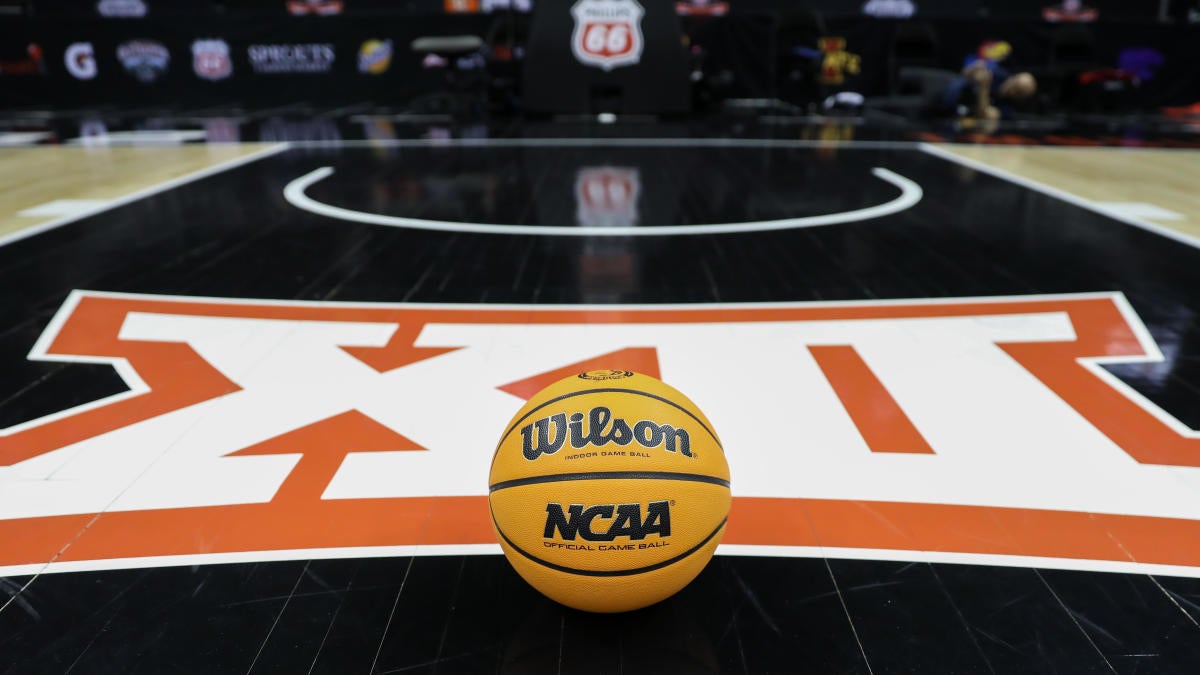
Conference realignment tracker: Ranking top moves for the 2023-2024 college basketball season
Here's who is moving where and the top storylines with conference changes official on July 1
By Matt Norlander
Jun 30, 2023
Saturday marks the official shift date for nearly 20 programs that are bouncing from one conference to another. In a couple of instances, teams are leaving Division I altogether.
Conference realignment news has been an annual rite of speculation and rumormongering — often with results that validate said speculation. Now that we've hit the midway point of 2023, let's remind and recap on how college sports' tectonic plates have shifted.
Here are the five biggest takeaways on college basketball's conference changes across Division I. Below that, we've got the list of all the schools swaps for 2023 and the ones to come in the future.
1. Big 12 going to 14 teams for just one season
A year from now, Texas and Oklahoma's long-anticipated move from the Big 12 to the SEC will be official. But for the the 2023-24 season, they'll take one last ride around the league they built up before bolting for the 16-team Southeastern Conference. The Big 12 has been a 10-team league for the past dozen years; it's jumping by four this season, due to the influx of Houston, Cincinnati, UCF and BYU. In football, that's going to make for a crowded and interesting collection of teams vying to qualify for the College Football Playoff in its final iteration of being a four-team event. In basketball, the question will be: Can the Big 12 remain the best hoops league in the sport after bloating to 14? Houston has been one of the best programs in college hoops the past half-decade, but usually, the larger the conference, the weaker it is top to bottom.The Big 12 remains in a speculative market moving forward. Commissioner Brett Yormark has been flirting with Pac-12 programs, in addition to Gonzaga and UConn. In a year, the Big 12 will actually be — here's a novel concept — at 12 teams. How long will it stay that way?
2. AAC downgraded — but adds a Final Four school
The American Athletic Conference has been around since 2013-14. For the past decade, it's held legitimate status to being what I dubbed a "Major Seven" conference. UConn won the national title in the American's debut season. Houston made a Final Four while representing the league. Memphis was relevant for most of the past 10 years. Cincinnati and Wichita State were often viable players.But there is no getting around this demotion. The American is losing Houston, Cincy and UCF to the Big 12. It offset those losses by adding mid-major programs (largely to take the "bigger-is-better" approach for football).
Who's coming in? You may need a year or five to remember this league's constitution of teams. New to the AAC, all jettisoning Conference USA simultaneously: Charlotte, FAU, North Texas, Rice, UAB, UTSA. Six schools, but in a good bit of timing, the conference adds the Owls of FAU, who bring back every major roster piece (who's eligible) from last season's Final Four squad. That means the conference should enter the basketball season with a preseason top 10 team.
The American is going to be a 14-team league and it will be among the most grueling, travel-wise, of any. The conference will span from southern Florida to Philadelphia to Dallas to the Carolinas and all over Texas. It's no longer a power conference, but is above pure mid-major status. I call this: a multi-bid league. The American will be in the same genre in college hoops as the Mountain West, West Coast Conference and Atlantic 10.
3. Conference USA continues its shape-shifting ways
This was once a league that bordered on high-major status throughout the 2000s. Those days are gone for good. CUSA (PSA: the hyphen is no more) is losing six programs (the ones all off to the American) and adding four replacements. Coming on board: Jacksonville State, Liberty, New Mexico State and Sam Houston.Liberty has been a relevant program as of late. Those on the football side believe the school is poised to continue to be a threat to win around 10 games per year in the seasons to come. In men's basketball, Liberty has won 21 or more games seven straight seasons under Ritchie McKay, and won the ASUN in three of the previous four seasons. New Mexico State has been similarly dominant at the mid-major level, though the men's basketball program is currently in rebuilding mode and with first-year coach Jason Hooten (coincidence: he left Sam Houston to take the NMSU job) after multiple scandals forced the Aggies to shutdown the program in the middle of last season.
CUSA will probably continue to be a one-bid league in hoops, with its geographic footprint spanning from New Mexico to Florida.
4. Hello: Le Moyne joins NEC
One of the more controversial storylines last March — which led to one of the biggest stories in sports — was the NCAA rule that prevented Merrimack (in its final year of transition to Division I) from competing in the NCAA Tournament despite winning the NEC championship. (That allowed Fairleigh Dickinson into the field of 68, and we know what happened next.)Previously, in its first two years of NEC membership, Merrimack wasn't even allowed to compete in the NEC tournament.
Division I newcomer Le Moyne won't have that problem. The NEC is allowing all nine of its members to play in the league tournament. The Dolphins, in addition to Stonehill, which moved up to D-I last season, will be able to play in the NEC bracket come 2024. It's an obvious decision. Now, what happens if we have another situation like in 2023?
Here's the league's protocol: "If a reclassifying institution wins the NEC Tournament championship, the tournament runner-up will advance to the NCAA Tournament as the NEC's automatic qualifier as per current policy. In instances where two reclassifying members reach an NEC final ... the NEC will stage an 'AQ Qualifier' game between the two non-advancing semifinal teams. This will serve as a decisive game to determine the team that will secure the NEC's spot in the NCAA Tournament."
5. Goodbye to Hartford and St. Francis Brooklyn
Division I is actually shrinking this year. Le Moyne is joining, but Hartford and St. Francis Brooklyn are gone. Hartford is officially out of Division I and moving to Division III. Kind of wild how the school made the 2021 men's NCAA Tournament, only to have its president rip it from the D-I ranks after its first March Madness showing.And at St. Francis, the school is dropping all sports due to mounting debt in its athletic department. It was a member of the NEC, but is now dissolved. The program was born in 1896 — one of the first college basketball programs to form — and lasted 127 years.
St. Francis expires without ever having made the NCAA Tournament, one of only four programs to fail to do so despite competing for the NCAA Tournament since its first year in 1939. The other three schools: Army, The Citadel and William & Mary.

